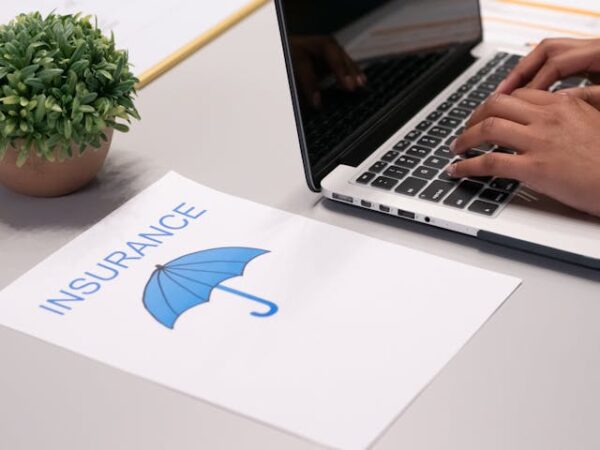What to Know About US Driving Laws and Getting a Driver’s License as a Newcomer

A man driving a car
Driving in the US is a practical necessity for many people. Having the ability to drive offers freedom and convenience. However, navigating US driving laws can be overwhelming, especially for newcomers. Each state has unique rules and requirements, adding an intriguing layer of complexity to the process! From understanding road signs to knowing when to yield, the nuances can be confusing if you are unfamiliar with the system. This guide aims to simplify the process, breaking down the steps you need to take to get your license in the US and helping you understand the most important laws. Whether preparing for the driving test or learning about local traffic rules, we will help you get on the road with confidence and ease.
Understanding US Driving Laws: The Basics
Driving laws in the US can differ significantly from one state to another. While some rules are consistent, like obeying speed limits or wearing seat belts, other regulations can vary. For example, some states may have stricter laws about using a cell phone while driving or turning right at a red light. Familiarize yourself with the specific state rules to avoid potential mistakes. Standard rules include yielding the right of way at intersections, stopping for school buses when their lights are flashing, and maintaining a safe following distance. The consequences of breaking these laws can be severe. Violating traffic rules might result in fines, points on your driving record, or even suspension of your license. In some cases, repeat offenses can lead to more serious penalties, such as mandatory driving courses or increased insurance rates. Stay informed about these regulations to avoid costly or legal trouble while on the road.
Steps to Getting a Driver’s License in the US
Getting a driver’s license in the US involves several essential steps. Each state has its process, but the general requirements are similar across the country.
- Apply at the DMV: Visit your local Department of Motor Vehicles (DMV) to start the application process.
- Pass the written knowledge test: This test covers basic driving laws, road signs, and safety rules.
- Complete a vision test: The DMV will check your eyesight to ensure you can drive.
- Attend driver education classes: Some states require new drivers to take a driver education course, especially if they are under 18.
- Take the road test: After passing the written and vision tests, schedule a driving test to demonstrate your ability to handle a vehicle on the road.
You will also need to provide certain documents when applying:
- Proof of identity (passport, birth certificate, etc.)
- Proof of residency (utility bill, rental agreement, etc.)
- Proof of immigration status (visa, green card, etc.)
Be sure to have everything ready to avoid process delays.

A person choosing documents from folders
Bounded by US driving laws, newcomers need to deliver specific documents concerning their identification to get a driver’s license
The Costs Involved
The costs involved in getting a driver’s license in the US can add up quickly. First, you need to pay application fees when applying for your license at the DMV. Some states have fees for the written and road tests. If you’re new to driving, you might also consider driver’s education or practice lessons, which can range from $50 to $300, depending on the provider. After obtaining your license, you’ll need to factor in car insurance costs, which are mandatory in most states. Insurance prices vary based on age, driving history, and the type of auto you own, so be sure to shop around for the best rates.
Finally, if you plan to move your car to the US or a different state, you’ll need to factor in the cost of transporting your vehicle. It can be expensive, but companies like Peasley Transfer & Storage, with years of experience in moving cars, deliver affordable options. They can help you calculate the cost of your car move while offering competitive rates, making your relocation easier.
Overcoming Common Challenges as a Newcomer
You may face several challenges when getting a driver’s license as a newcomer to the US. One common issue is the language barrier during the written knowledge test. If you are not fluent in English, many states offer test translations or allow you to take the test in your native language. Another challenge is adjusting to driving on the right side of the road. For those coming from countries where driving is on the left, this can feel disorienting at first. Practicing in a safe environment before taking the road test is vital.
Lastly, many newcomers also wonder if they need an international driving permit (IDP). If you plan to drive temporarily before getting a US license, an IDP is often required. This permit translates your existing license and makes it easier for authorities to verify your driving credentials.
Why Insurance is Mandatory and How to Get It
Car insurance is a legal requirement for all drivers in the United States. Each state has different minimum coverage requirements, but most require liability insurance, which covers damages to others in the event of an accident. Other common types of car insurance include collision (which covers damage to your vehicle in an accident) and comprehensive (which protects against non-collision damage such as theft or weather-related incidents).
To find the best rates, compare quotes from different insurance providers, as rates vary considerably. Look for discounts based on factors such as your driving history, car model, and bundling other insurance policies.
If you plan to relocate and bring your vehicle along, you’ll need to prepare your car for the move. It includes ensuring the car is in good condition, as some states require a vehicle inspection as part of the driver’s license process. This ensures your car meets local safety and emissions standards, which is essential for passing inspections and registering your vehicle.

A piece of paper with a blue umbrella on it next to a laptop
Whichever state you’re moving to, car insurance is required, but with different requirements
Adapting to US Roads: Driving Culture and Etiquette
Understanding the rules is essential, but getting a feel for the local customs and attitudes can truly enhance your experience behind the wheel. One of the most influential aspects of driving is using turn signals. Drivers must signal their intentions well in advance when changing lanes or turning. Lane discipline is also significant; staying in your lane and respecting lane markings is a must. Another crucial rule involves school buses. When a school bus has red lights flashing, you must stop, regardless of traveling direction. Similarly, at pedestrian crossings, drivers must yield to pedestrians at marked crosswalks. Building confidence on US roads takes time. Start by driving in less busy areas to get used to the rules and the road. Practice defensive driving techniques and stay aware of other drivers.

A woman with a scarf on her head driving a car
Newcomers should pay attention to the local customs when it comes to driving, which will only make it easier and more comfortable for them
Practical Tips for New Drivers to Stay Safe and Compliant
For new drivers, staying safe and compliant with US Driving Laws involves adopting a few simple habits. Here are some practical tips to help you on the road:
- Always carry your driver’s license and insurance documents when driving.
- Practice defensive driving. Stay aware of other drivers and be prepared for any sudden moves. Always keep a safe distance and avoid aggressive driving.
- Avoid distractions, such as using a cell phone while driving. Distracted driving can lead to accidents and hefty fines. Focus on the road to stay safe.
- Use apps for navigation and road awareness. Google Maps or Waze can help you find the best routes so you can choose what’s best for your vehicle. They can also alert you about traffic or hazards in real time.
By following these tips, you’ll drive with more confidence. Keeping your attention on the road and staying prepared is the best way to stay safe.
Conclusion
Navigating the road as a newcomer can seem overwhelming, but understanding US Driving Laws can help make the process easier. From familiarizing yourself with driving rules to ensuring you have the right insurance and documents, staying informed is the first step. By following basic guidelines, you will build confidence on the road. Lastly, budgeting for the costs involved and using helpful navigation apps will set you up for success. With these tips, you’ll be ready to drive safely, legally, and confidently in the US.